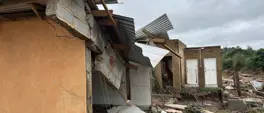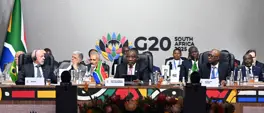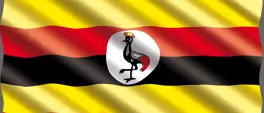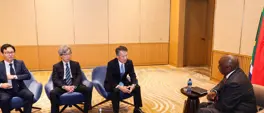Laying new tracks: how infrastructure and trade are redrawing Africa’s economic map
Kopano Mohlala
29 May 2025 | 14:49Africa's growing youth population combined with strategic infrastructure projects like Trans-Sahara Highway and Libido Corridor is driving economic transformation through AfCFTA creating investment opportunities across the continent.
Acclaimed journalist Crystal Orderson, who specialises in economic and political affairs concerning the African continent, joins 702's Bingani Bingwa to explore the considerable infrastructure development taking place on the continent and its impact on facilitating trade.
Africa has a rapidly growing youth population, representing approximately 30% of the global youth demographic, which translates to around 400 million young individuals.
This offers numerous opportunities, especially in healthcare, agriculture, education, and consumer goods. The private sector regards this as the future.
The continent’s most ambitious economic project, the African Continental Free Trade Agreement (AfCFTA), is transforming the way African countries interact with one another. The agreement, ratified by nearly 50 countries, is poised to become the world’s second-largest integrated market.
“It is the world's second-largest integrated market... and I do think it's a major green shoot for the continent.”
- Crystal Orderson, Journalist
Statistics from the African Development Bank indicate that trading between African countries is often more costly, leading to a markup on traded goods. Historically, countries have rarely traded with one another, but this trade agreement aims to rectify the issue. For the trade agreement to be effective, the continent must tackle high intra-African trade costs and inadequate logistics infrastructure.
Orderson points to a range of infrastructure projects that are transforming access and logistics. Chief among them is the Trans-Sahara Highway, a 9,000-kilometre motorway linking Algeria to Lagos.
“It literally links the entire Maghreb and Sahel region… clearly vital for trade.”
- Crystal Orderson, Journalist
Financed by the African Development Bank, the highway serves as a vital lifeline for landlocked countries such as Mali and Chad, facilitating access to markets and ports. It spans 27 border crossings and billions in investment.
In Abidjan, a co-financed infrastructure project delivered 88 kilometres of renovated intersections and safer roads, creating jobs for more than 10,000 young people.
“This is the reality of what infrastructure investment can mean for a country, for a community.”
- Crystal Orderson, Journalist
Speaking to RMB Chief Economist Isaah Mhlanga, Orderson discusses the Lobito Corridor, a 1,300 km railway running from Angola’s Lobito port through the DRC and into Zambia.
Mhlanga emphasises that rail infrastructure must not be underestimated, as it is critical, particularly given that most African countries export commodities.
“Think about copper in Zambia, think about cobalt in the DRC… all of those things need to move across rail,”
- Isaah Mhlanga, RMB Chief Economist
The Lobito Corridor is seen as a game changer, providing a quicker route for transporting critical minerals from the copper belt of the DRC and Zambia to the port of Lobito.
It is important to highlight that having the same rail gauges allows trains to seamlessly cross borders without the need to redesign railway lines. This facilitates the transportation of bulk goods to ports such as Durban, those in East Africa, and Angola.
“If we can integrate these systems… it becomes easier to transport these [commodities] to ports.”
- Isaah Mhlanga, RMB Chief Economist
Across these infrastructure projects, one theme is clear: the importance of collaboration. Governments, investors, and the private sector are joining forces to finance the roads, railways, and logistics networks essential for the continent’s economic transformation.
“If we want to grow, we have to get our roads working… and clearly there’s room for investment.”
- Isaah Mhlanga, RMB Chief Economist
Get the whole picture 💡
Take a look at the topic timeline for all related articles.

















